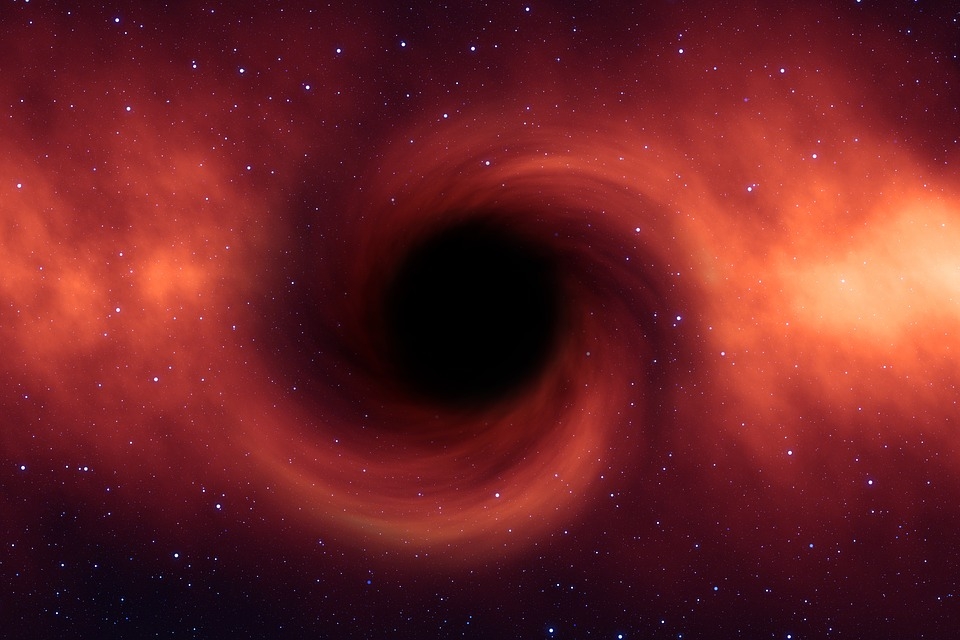All we have known about black holes is that they reside within galaxies and can consume everything it comes across. However, it has been revealed that the more black holes feed, the more dangerous it can become.
Express reports that feeding a black hole can make it even more dangerous, according to expert Alvaro Diez from the University of Warsaw in Poland. This is because the more a black hole feeds, the bigger it grows, and the bigger it grows, the stronger it gets and the stronger it gets, the deadlier it also gets. For instance, if a star or a planet is swallowed up by a black hole, the collision that would occur due to the energy, friction, and radiation that is being emitted. Some of that energy that was emitted upon collision would turn into a bright light, which is why black holes tend to shine within the galaxy it is in.
These lights are also referred to as tidal disruptions and the power of the lights depend on the size of the object it swallowed. The point of no return within the black hole will also expand as it feeds. Black holes are usually not visible to the naked eye, but astronomers are still able to determine the size and radius of a black hole using a set of equations.
Meanwhile, it was previously reported that NASA has discovered an exoplanet that the space agency has nicknamed an “Inferno” planet that has an average temperature that is hotter than the surface of the sun. Formally known as a Kepler 70-b, this exoplanet was orbiting around a white dwarf star called Kepler 70. Kepler 70-b is the hottest exoplanet known so far as of 2017.
Also referred to as KOI-55, NASA has explained that this exoplanet may as well be another “circle of hell,” referencing Dante’s Inferno, with how hot it is. This exoplanet has an average temperature of 6,800 degrees celsius, much hotter than the sun’s surface. The space agency went on to explain that this exoplanet used to be the size of Jupiter, but has since gotten smaller after some time with the dead star it orbits around.



 Alpha, beta, theta: what are brain states and brain waves? And can we control them?
Alpha, beta, theta: what are brain states and brain waves? And can we control them?  The brightest object in the universe is a black hole that eats a star a day
The brightest object in the universe is a black hole that eats a star a day  Why is the universe ripping itself apart? A new study of exploding stars shows dark energy may be more complicated than we thought
Why is the universe ripping itself apart? A new study of exploding stars shows dark energy may be more complicated than we thought  Black hole, neutron star or something new? We discovered an object that defies explanation
Black hole, neutron star or something new? We discovered an object that defies explanation  Archeoastronomy uses the rare times and places of previous total solar eclipses to help us measure history
Archeoastronomy uses the rare times and places of previous total solar eclipses to help us measure history  The brain is the most complicated object in the universe. This is the story of scientists’ quest to decode it – and read people’s minds
The brain is the most complicated object in the universe. This is the story of scientists’ quest to decode it – and read people’s minds  Our survey of the sky is uncovering the secrets of how planets are born
Our survey of the sky is uncovering the secrets of how planets are born  Could a telescope ever see the beginning of time? An astronomer explains
Could a telescope ever see the beginning of time? An astronomer explains  Why now is the time to address humanity’s impact on the moon
Why now is the time to address humanity’s impact on the moon  Orbital resonance − the striking gravitational dance done by planets with aligning orbits
Orbital resonance − the striking gravitational dance done by planets with aligning orbits  What is minoxidil, the anti-balding hair growth treatment? Here’s what the science says
What is minoxidil, the anti-balding hair growth treatment? Here’s what the science says  Eggs from men, sperm from women: how stem cell science may change how we reproduce
Eggs from men, sperm from women: how stem cell science may change how we reproduce  Larger and more frequent solar storms will make for potential disruptions and spectacular auroras on Earth
Larger and more frequent solar storms will make for potential disruptions and spectacular auroras on Earth  Tatahouine: 'Star Wars meteorite' sheds light on the early Solar System
Tatahouine: 'Star Wars meteorite' sheds light on the early Solar System 































